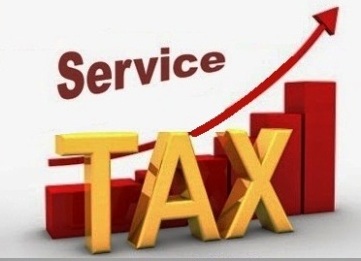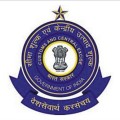AMENDMENTS IN THE CENVAT CREDIT RULES, 2004
New Post : PPT Presentation on Union Budget 2016-17
Amendments related to Capital Goods
- Wagons of sub heading 8606 92 included in the definition of capital goods
- The Capital goods used in office located within factory is also eligible for Cenvat Credit.
- CENVAT credit on inputs and capital goods used for pumping of water, for captive use in the factory, is being allowed even where such capital goods are installed outside the factory.
- All capital goods having value upto Rs.10,000/- per piece are being included in the definition of inputs.
[Free & Updated] Online Library of Service Tax Law
Amendments related to Inputs send to Job worker
- Manufacturer of final products is being allowed to take CENVAT credit on tools of Chapter 82 of the Central Excise Tariff in addition to credit on jigs, fixtures, moulds & dies, when intended to be used in the premises of job-worker or another manufacturer who manufactures the goods as per specification of manufacturer of final products.
- It is also being provided that a manufacturer can send jigs, fixtures, moulds & dies goods directly to such other manufacturer or job-worker without bringing the same to his premises.
- The permission given by an Assistant Commissioner or Deputy Commissioner to a manufacturer of the final products for sending Inputs or partially processed inputs can be send outside factory to a job-worker and clearance there from on payment of duty is valid for 3 financial years.
CENVAT Credit Eligibility
- Radio Frequency Spectrum, Mines etc.: CENVAT credit of Service Tax paid on amount charged for assignment by Government or any other person of a natural resource such as radio-frequency spectrum, mines etc. shall be spread over the period of time for which the rights have been assigned.
- Where the manufacturer of goods or provider of output service further assigns such right to use assigned to him by the Government or any other person, in any financial year, to another person against a consideration, balance CENVAT credit not exceeding the service tax payable on the consideration charged by him for such further assignment, shall be allowed in the same financial year. It is also being provided that CENVAT credit of annual or monthly user charges payable in respect of such assignment shall be allowed in the same financial year.
- Infrastructure Cess: Cenvat credit cannot be utilised for payment of Infrastructure Cess. Further, no credit of this Cess would be available under the Credit Rules.
[Free & Updated] Online Library of Central Excise Law
Amendment in Rule 6
- Rule 6(1): The existing principle that CENVAT credit shall not be allowed on such quantity of input and input services as is used in or in relation to manufacture of exempted goods and exempted service. The procedure for calculation of credit not allowed is provided in sub-rules (2) and (3), for two different situations.
- Rule 6(2): A manufacturer who exclusively manufactures exempted goods for their clearance up to the place of removal or a service provider who exclusively provides exempted services shall pay (i.e. reverse) the entire credit and effectively not be eligible for credit of any inputs and input services used.
- Rule 6(3) When a manufacturer manufactures two classes of goods for clearance upto the place of removal, namely, exempted goods and final products excluding exempted goods or when a provider of output services provides two classes of services, namely exempted services and output services excluding exempted services, then the manufacturer or the provider of the output service shall exercise one of the two options, namely,
(a) pay an amount equal to 6% of value of the exempted goods and 7% of value of the exempted services, subject to a maximum of the total credit taken or
(b) pay an amount as determined under sub-rule (3A).
- Rule 6 (3A) : The procedure and conditions for calculation of credit allowed and credit not allowed and such credit not allowed shall be paid, provisionally for each month. Intimation in writing to the Superintendent of Central Excise is necessary. The four key steps for calculating the credit required to be paid are :-
– No credit of inputs or input services used exclusively in manufacture of exempted goods or for provision of exempted services shall be available ;
– Full credit of input or input services used exclusively in final products excluding exempted goods or output services excluding exempted services shall be available;
– Credit left thereafter is common credit and shall be attributed towards exempted goods and exempted services by multiplying the common credit with the ratio of value of exempted goods manufactured or exempted services provided to the total turnover of exempted and non-exempted goods and exempted and non-exempted services in the previous financial year;
– Final reconciliation and adjustments are provided for after close of financial year by 30th June of the succeeding financial year, as provided in the existing rule.
- New sub-rule (3AA): A manufacturer or a provider of output service who has failed to follow the procedure of giving prior intimation, may be allowed by a Central Excise officer, competent to adjudicate such case, to follow the procedure and pay the amount prescribed subject to payment of interest calculated at the rate of 15% p.a.
- New sub-rule (3AB) (transitional provision) The existing rule 6 of CCR would continue to be in operation upto 30.06.2016, for the units who are required to discharge the obligation in respect of financial year 2015-16.
- Rule 6(3B) Allow banks and other financial institutions to reverse credit in respect of exempted services on actual basis in addition to the option of 50% reversal.
- Explanations 3 and 4 are being inserted in rule 6, sub-rule (1) so as provide for reversal of CENVAT Credit on inputs/input services which have been commonly used in providing taxable output service and an activity which is not a ‘service’ under the Finance Act, 1994.
- Rule 6(4): No CENVAT credit shall be allowed on capital goods if the same are used for the manufacture of exempted goods or provision of exempted service for two years from the date of commencement of commercial production or provision of service.
- Rule 6(7) Credit taken on inputs and input services used in providing a service by way of “transportation of goods by a vessel from customs station of clearance in India to a place outside India” shall not be required to be reversed by the shipping lines.
Document to Avail Cenvat Credit
- Now an invoice issued by a service provider for clearance of inputs or capitals goods shall also be a valid document for availing CENVAT credit.
New Return for Service Provider
- Now Provider of Output Services Also requires to file an Annual Return for each financial year, by the 30th day of November of the succeeding year in the form as specified by a notification by the Board.
Cenvat Utilization Steps
- Rule 14 (2) omitted. There was a procedure based on FIFO method for determining whether a particular credit has been utilized.
Amendments related to Input Service Distributor (ISD)
- Definition of “Input Service Distributor” has been changed by including the ‘Outsourced Manufacturing Unit’ to which such distributor can transfer Cenvat Credit.
- The outsourced Mfg. unit shall maintain separate account for input service credit received from each ISDs.
- These amendments will come in effect from 01-04-2016. Therefore Cenvat credit upto 31-03-2016 would not be transferred to outsourced Mfg. unit.
- New Rule 7B: Manufacturers with multiple manufacturing units can maintain a common warehouse for inputs and distribute inputs with credits to the individual manufacturing units. Further manufacturer having one or more factories allowed to take credit on inputs received under the cover of an invoice issued by a warehouse of the said manufacturer.
Other Post Related to Union Budget 2016-17
- Equalisation Levy
- The Income Declaration Scheme 2016
- The Direct Tax Dispute Resolution Scheme, 2016
- The Indirect Tax Dispute Resolution Scheme 2016
- Changes proposed Central Excise Law by Union Budget 2016-17
- CBEC TRU Circular for Excise and Customs Changes in Union Budget 2016-17
- Clarifications on Excise Duty imposed on Jewellery in union Budget 2016-17
- Changes proposed in Service Tax by Union Budget 2016-17
- Krishi Kalyan Cess
- CBEC TRU Circular on Service Tax Changes in Union Budget 2016-17
- Changes in Cenvat Credit Rules by Union Budget 2016-17
- Changes made in Direct Tax Law by Union Budget 2016-17
- Finance Bill 2016 Provisions Relating to Direct Taxes
- Highlights of Union Budget 2016-17
- Union Budget 2016-17






